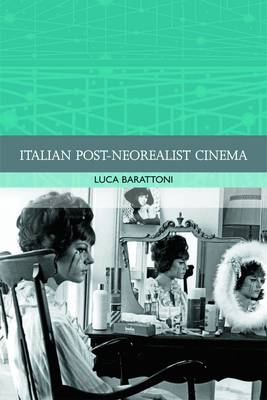
- Afhalen na 1 uur in een winkel met voorraad
- Gratis thuislevering in België vanaf € 30
- Ruim aanbod met 7 miljoen producten
- Afhalen na 1 uur in een winkel met voorraad
- Gratis thuislevering in België vanaf € 30
- Ruim aanbod met 7 miljoen producten
Zoeken
€ 201,45
+ 402 punten
Omschrijving
Unlike countries like France, the Czech Republic or Brazil, Italy did not have a new wave properly understood as a movement. However, while new artistic schools were emerging in many other countries, Italy was undergoing its most dramatic social and economic transformations. Those violent changes, together with the perceived necessity of renewing the aesthetic heritage of Neorealism, sparked a drastic regeneration of the cinematic language and marked the most memorable period of Italian film history.Italian Post-Neorealist Cinema explores the ferments of Italian cinema from the mid-50s to the end of the 60s, situating its wealth in the context of other national cinemas emerging at the same time. Olmi, Pasolini, Antonioni, Fellini, Visconti, the Taviani Brothers, Cavani, Rosi, Ferreri and many others all made their debut or directed their most representative works during the period. The book brings to the surface the lines of experimentation and artistic renewal appearing after the exhaustion of Neorealism, mapping complex areas of interest such as the emergence of ethical concerns, the relationship between ideology and representation, and the role of Italian counter-culture.
Specificaties
Betrokkenen
- Auteur(s):
- Uitgeverij:
Inhoud
- Aantal bladzijden:
- 288
- Taal:
- Engels
- Reeks:
Eigenschappen
- Productcode (EAN):
- 9780748640546
- Verschijningsdatum:
- 9/10/2012
- Uitvoering:
- Hardcover
- Formaat:
- Genaaid
- Afmetingen:
- 155 mm x 236 mm
- Gewicht:
- 703 g

Alleen bij Standaard Boekhandel
+ 402 punten op je klantenkaart van Standaard Boekhandel
Beoordelingen
We publiceren alleen reviews die voldoen aan de voorwaarden voor reviews. Bekijk onze voorwaarden voor reviews.








